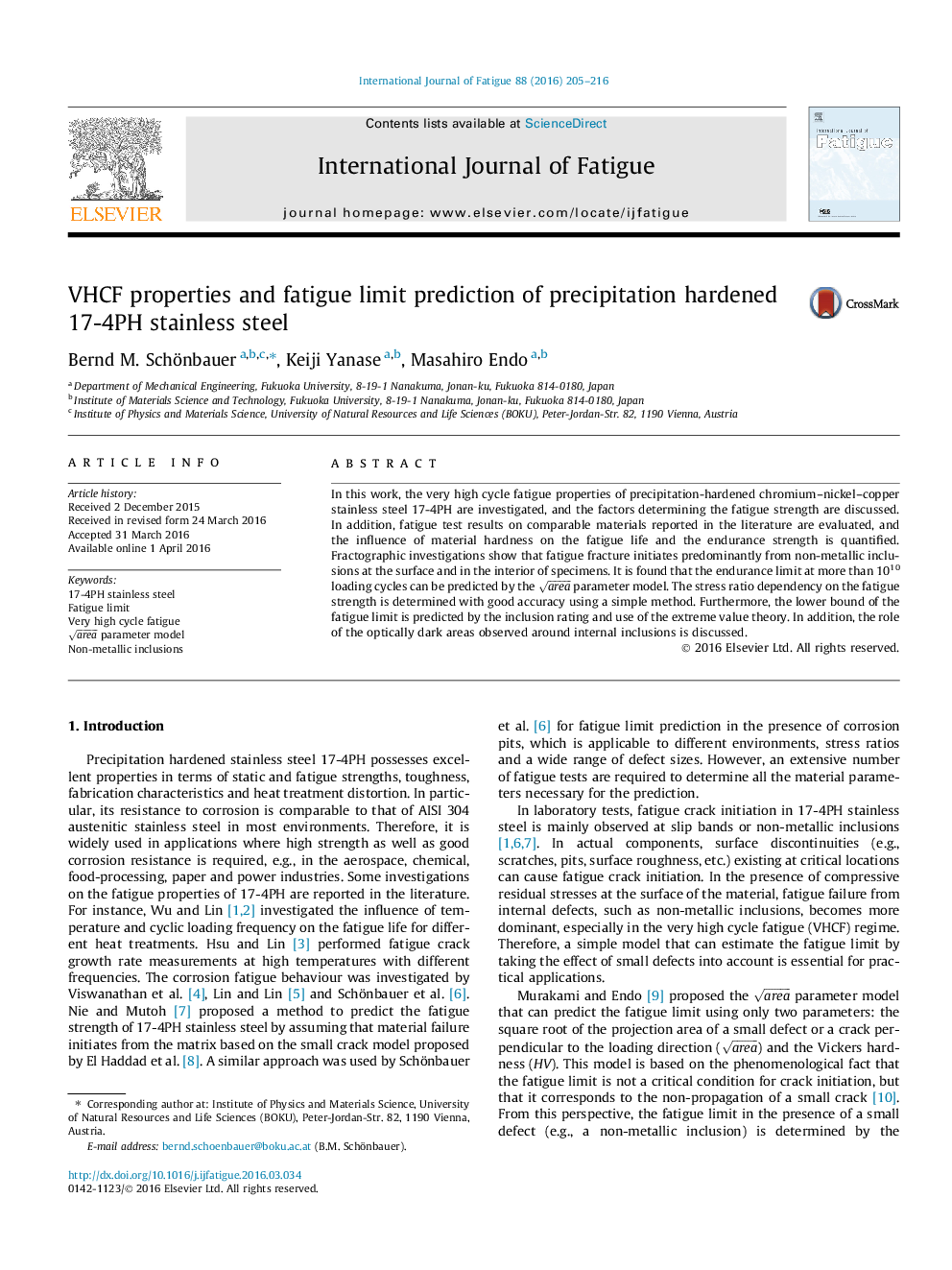| Article ID | Journal | Published Year | Pages | File Type |
|---|---|---|---|---|
| 777535 | International Journal of Fatigue | 2016 | 12 Pages |
•Fatigue failure in 17-4PH originates preferably from non-metallic inclusions.•The fatigue strength can be estimated using the area parameter model.•The stress ratio dependency is determined by fractographic investigations.•The lower bound of the fatigue limit is predicted using the extreme value theory.•The role of optically dark areas in fish-eye fractures is discussed.
In this work, the very high cycle fatigue properties of precipitation-hardened chromium–nickel–copper stainless steel 17-4PH are investigated, and the factors determining the fatigue strength are discussed. In addition, fatigue test results on comparable materials reported in the literature are evaluated, and the influence of material hardness on the fatigue life and the endurance strength is quantified. Fractographic investigations show that fatigue fracture initiates predominantly from non-metallic inclusions at the surface and in the interior of specimens. It is found that the endurance limit at more than 1010 loading cycles can be predicted by the area parameter model. The stress ratio dependency on the fatigue strength is determined with good accuracy using a simple method. Furthermore, the lower bound of the fatigue limit is predicted by the inclusion rating and use of the extreme value theory. In addition, the role of the optically dark areas observed around internal inclusions is discussed.
